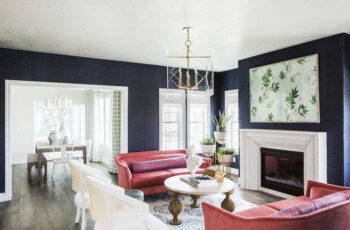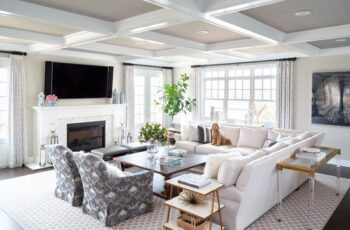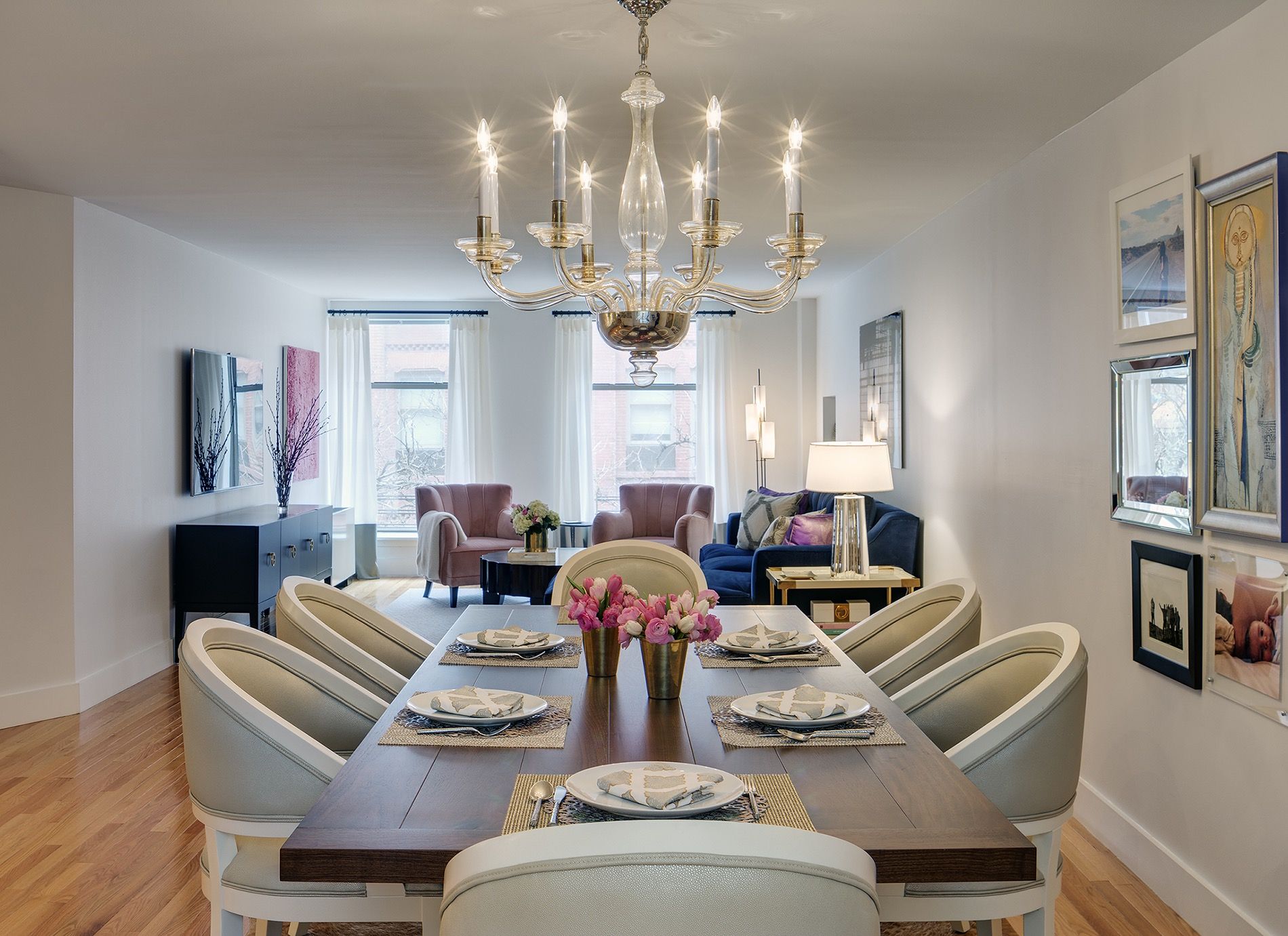
Seamless Style: Mastering Living Room and Dining Room Decorating Ideas
The living room and dining room are, for many, the twin hearts of the home. They are where we gather with family, entertain friends, share meals, and unwind after a long day. Whether you have two distinct rooms or a modern open-plan layout, creating a harmonious and aesthetically pleasing connection between these spaces is key to a comfortable and inviting home. This article delves into a comprehensive guide to decorating your living and dining areas, offering ideas to achieve both cohesion and individual character.
I. Understanding Your Space’s Blueprint: Combined vs. Separate
Before diving into decor, it’s crucial to assess your home’s layout.
A. Open-Concept Living (Combined Spaces): This increasingly popular layout merges the living and dining areas into one larger space, often also incorporating the kitchen.
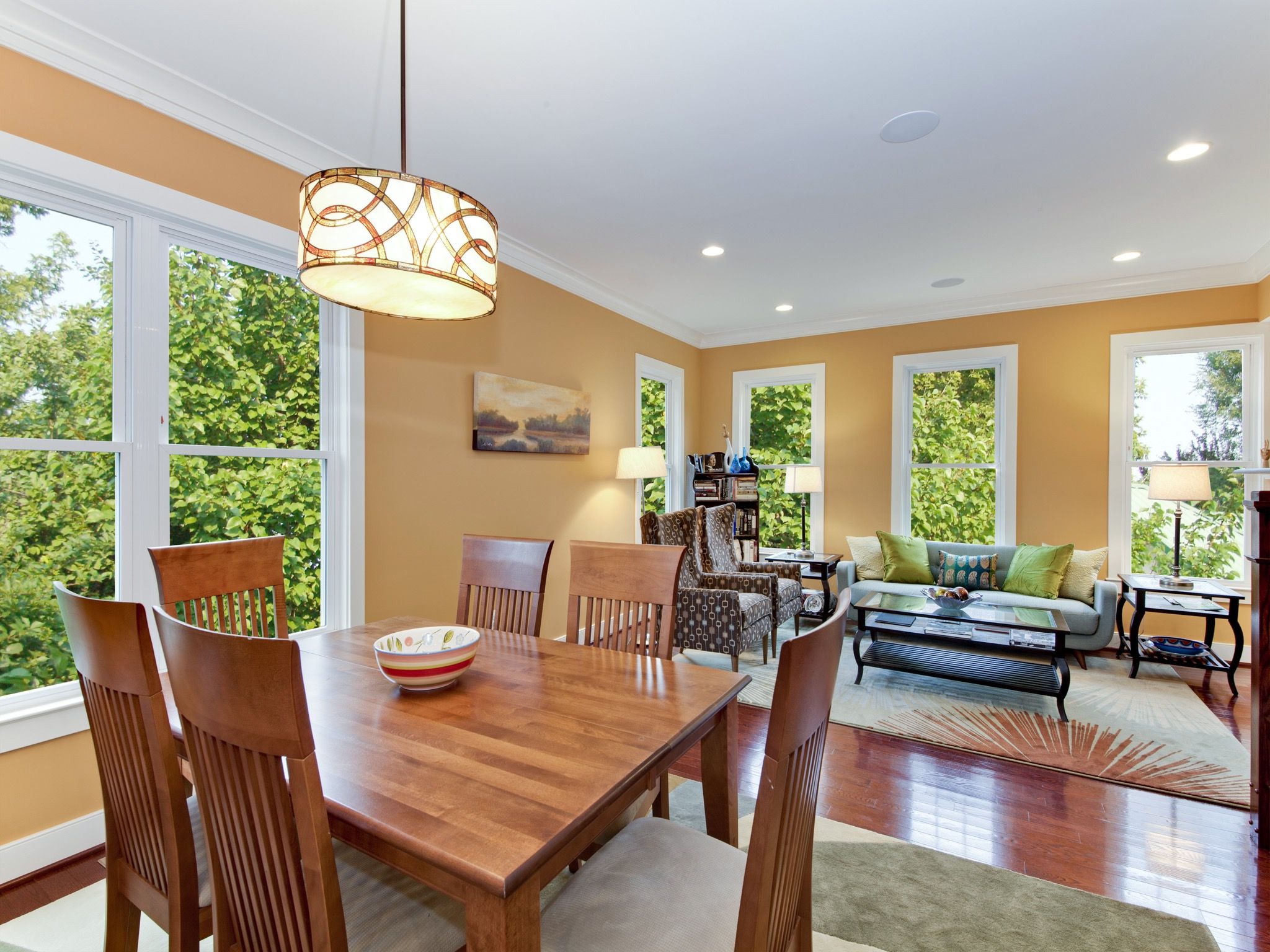
- Pros: Promotes togetherness, maximizes natural light, feels spacious.
- Cons: Can be challenging to define zones, noise travels, requires careful cohesion.
B. Traditional (Separate Rooms): Many homes still feature distinct, walled-off living and dining rooms.

- Pros: Allows for different moods and decor styles, offers more privacy and quiet.
- Cons: Can feel disconnected if not decorated with a unifying theme, potentially less natural light sharing.
Regardless of your layout, the goal remains the same: to create spaces that are both beautiful and highly functional, reflecting your personal style while providing a welcoming atmosphere for all who enter.

II. The Art of the Open-Concept: Seamless Transitions in Combined Spaces
Decorating a combined living and dining area requires thoughtful planning to create distinct zones while maintaining an overarching sense of unity.
A. Defining Zones Without Walls:
The biggest challenge in open-plan living is preventing the space from feeling like one large, undefined room.
- Area Rugs: This is perhaps the most powerful tool. A large rug in the living area immediately anchors the seating arrangement, while a dining room rug (sized to accommodate chairs pulled out) clearly delineates the eating space. Ensure rugs complement each other in style and color palette.
- Furniture Arrangement: Position sofas and chairs to create a natural boundary for the living area. A console table behind a sofa, or a bookshelf, can act as a soft divider. Similarly, the dining table and chairs naturally form their own zone.
- Room Dividers & Screens: For a more physical, yet still open, separation, consider low bookshelves, open shelving units, decorative screens, or even a strategically placed plant wall. These allow light and conversation to flow while providing a visual break.
- Lighting: Different lighting fixtures for each zone can create a clear distinction. A statement pendant over the dining table immediately identifies it, while floor lamps and table lamps define the cozy living area.


B. Achieving Cohesion: The Invisible Thread:
While defining zones is important, the real magic lies in making them feel like part of the same story.
- Unified Color Palette: Select a primary color scheme that flows through both areas. This doesn’t mean everything has to be the same shade, but rather that colors complement each other. Use a dominant neutral, an accent color that appears in both spaces (e.g., throw pillows in the living room echoing a vase in the dining room), and perhaps a secondary accent.
- Repetition of Materials & Textures: Echo key materials across both zones. If your living room has a wooden coffee table, consider dining chairs with wooden legs, or a wooden credenza. Repeat metal finishes (e.g., brass accents in both), or similar fabric textures (e.g., velvet in both seating and perhaps a dining chair accent cushion).
- Consistent Design Style: Decide on an overarching style (modern, farmhouse, traditional, bohemian, industrial, etc.) and stick to it. This doesn’t mean buying everything from the same collection, but ensuring pieces share a similar aesthetic language.
- Flow of Furniture: Pay attention to the scale and height of furniture. Ensure pieces don’t overwhelm the space or block sightlines. A sofa that’s too high might visually cut off the dining area, for instance.
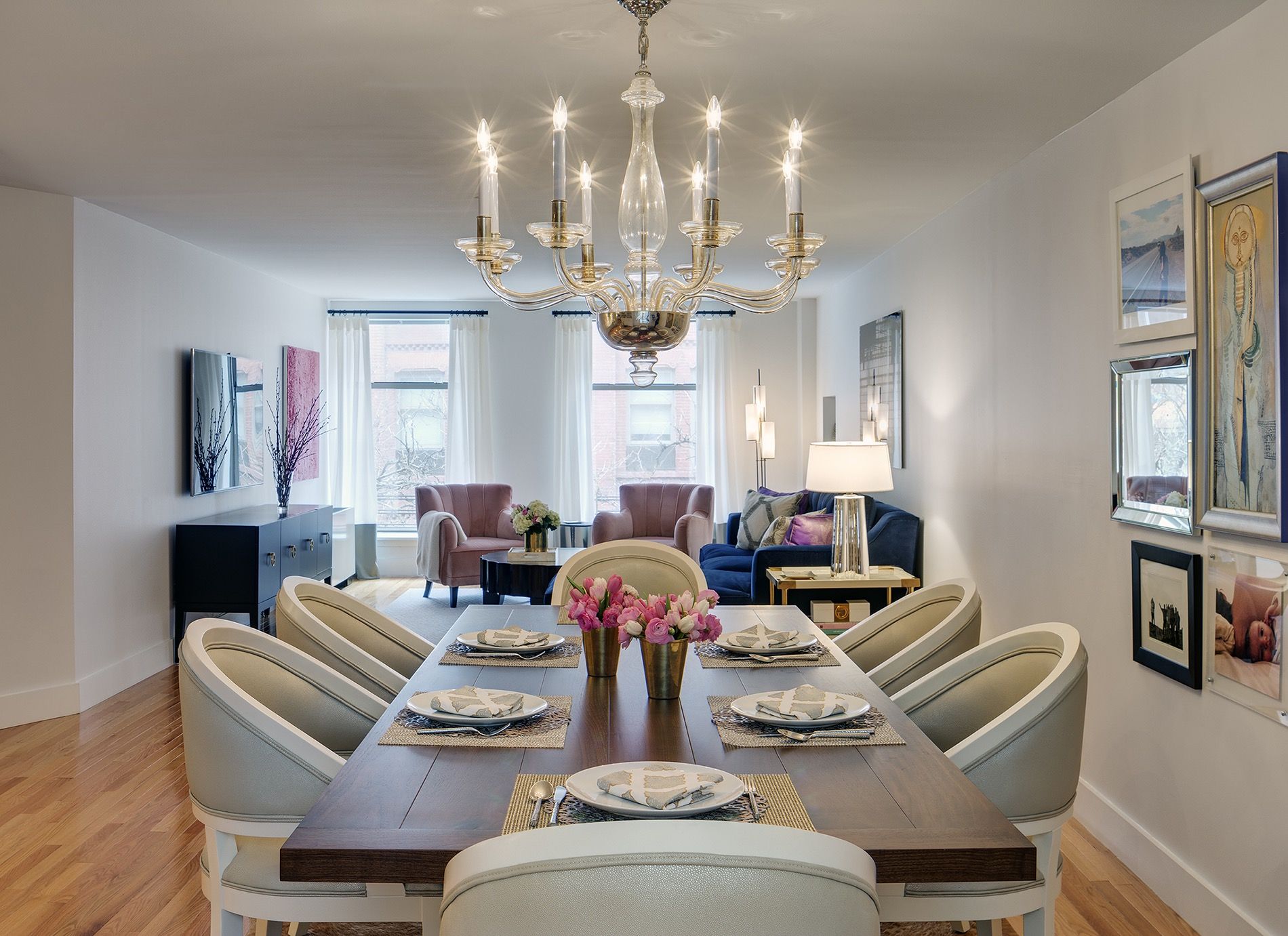
C. Smart Furniture Choices:
- Multi-functional Pieces: In open-plan spaces, every item counts. An ottoman that serves as extra seating, a coffee table, and storage is invaluable. A dining bench can offer flexible seating and be pushed against a wall when not in use.
- Scale and Proportion: Avoid oversized furniture that can make the space feel cramped. Opt for pieces that are appropriately scaled for their designated zone but also relate to the overall dimensions of the combined room. Leggy furniture (pieces with visible legs rather than solid bases) can help a space feel lighter and more open.
D. Lighting: Setting the Mood and Defining Zones:
Layered lighting is critical.
- Ambient Lighting: General illumination from recessed lights or a central fixture.
- Task Lighting: Specific lighting for activities, like a pendant over the dining table, or reading lamps in the living room.
- Accent Lighting: Highlights features like artwork or architectural details, adding depth and interest.
Dimmers are a must, allowing you to control the mood and transition from bright dining to cozy lounging.
E. Flooring: Unified or Subtly Divided:
- Unified Flooring: Using the same flooring (hardwood, tile, or even carpet) throughout the combined space creates the most seamless flow and makes the area feel larger.
- Large Area Rugs: If you have unified hard flooring, large area rugs are essential for defining zones and adding warmth.
F. Strategic Storage Solutions:
Clutter can quickly overwhelm an open-concept space. Incorporate stylish storage solutions like credenzas, built-in shelving, storage ottomans, and baskets to keep things tidy and functional.
G. Art & Decor: The Finishing Touches:
Use artwork and decorative accessories to reinforce your chosen style and color palette. A gallery wall in the living room can echo a large piece of art in the dining area. Plants and greenery add life and freshness to both zones.
III. Harmonizing Separate Spaces: Bridging the Divide
Even with distinct living and dining rooms, creating a sense of connection and flow is important for a cohesive home.
A. Establishing a Consistent Design Language:
While each room can have its own personality, they should speak the same design language. If your living room is modern minimalist, a rustic farmhouse dining room will feel jarring. This consistency applies to overall style, mood, and the general feeling you want to evoke.
B. The Power of Color Flow:
- Related Palettes: Instead of identical colors, choose related palettes. For example, if your living room is a cool grey with blue accents, your dining room could be a slightly warmer grey with a deeper blue or even a complementary green.
- Accent Colors Bridging Rooms: Use a consistent accent color in both rooms. A vibrant yellow throw pillow in the living room could be echoed by yellow flowers in a vase on the dining table, or a piece of art with yellow elements.
- Paint Transitions: Consider using a slightly lighter or darker shade of the same color in adjacent rooms, or a complementary neutral.
C. Thoughtful Transitions:
- Doorways and Hallways: Don’t neglect the spaces in between. A consistent paint color or wallpaper in hallways can link the rooms. Ensure flooring transitions smoothly, whether it’s a unified material or a well-chosen threshold.
- Consistent Trim and Molding: Using the same style and color of baseboards, door frames, and crown molding throughout adjacent rooms creates a subtle but powerful sense of continuity.
D. Echoing Elements:
- Similar Wood Tones or Metal Finishes: If your living room has dark wood furniture, choose dark wood for your dining table or a buffet. If brass is a common accent, ensure it appears in both rooms (e.g., a lamp in the living room, a candelabra in the dining room).
- Shared Decorative Objects: Use similar types of decorative objects, even if they’re not identical. For instance, if you love abstract art, have abstract pieces in both rooms. If you collect ceramics, ensure some are displayed in both areas.
- Window Treatments: Using the same style of window treatments (e.g., linen drapes, Roman blinds) throughout the adjacent rooms creates a unified look from the outside and a cohesive feel inside.
E. Lighting’s Role in Continuity:
While fixtures don’t need to be identical, they should relate in style, material, or finish. For example, a modern chandelier in the dining room could be complemented by modern floor lamps in the living room. Consistent light temperatures (warm white, cool white) also contribute to a harmonious atmosphere.
IV. Universal Decorating Principles for Both Layouts
No matter your home’s configuration, these principles are fundamental to successful interior design:
A. Scale and Proportion: Always consider how furniture and decor pieces relate to the size of the room and to each other. A massive sofa in a small living room, or tiny chairs around a grand dining table, will feel off-balance.
B. Layering Textures and Materials: This adds depth, warmth, and visual interest. Combine soft fabrics (rugs, curtains, upholstery) with hard surfaces (wood, metal, glass, stone).
C. The Importance of Layered Lighting: As discussed, a mix of ambient, task, and accent lighting is crucial for functionality and setting the desired mood.
D. Functionality First: Before you decorate, consider how you actually use each space. Do you host large dinner parties or intimate meals? Do you need a quiet reading nook or a lively conversation area? Let function guide your design choices.
E. Personalization: Your home should tell your story. Incorporate items that bring you joy, reflect your travels, or showcase your hobbies. This is what makes a house a home.
F. Don’t Forget the Greenery: Plants instantly bring life, color, and a sense of calm to any room. Choose plants appropriate for your light conditions and maintenance preferences.
G. Budget Wisely: Decorating doesn’t have to break the bank. Prioritize key pieces, mix high-end with affordable finds, and consider DIY projects.
Conclusion
Decorating your living and dining rooms, whether combined or separate, is an exciting journey that transforms your house into a personalized sanctuary. By understanding the principles of zoning, cohesion, and thoughtful transitions, you can create spaces that are not only beautiful and functional but also resonate with warmth and welcome. Embrace your unique style, experiment with ideas, and enjoy the process of crafting the heart of your home.
Seamless Style: Mastering Living Room and Dining Room Decorating Ideas | in opo wae, wis opo wae, and on last post i/admin have give some post/articles and many pictures gallery about " Living Room Design Tools: Unleash Your Inner Decorator" if you have not seen it, please check out before seeing this. (just click text in "anchor text" to read or see last post first), I have packed all images collections become 1 gallery images on post and this time i just want to share again from my collections to could be useful :D. These pictures of Seamless Style: Mastering Living Room and Dining Room Decorating Ideas, I have collected in a fairly long time, and from various media such as the Internet, books, magazines, newspapers, comics, etc like as from search engine and other sources to be used as ideas for you. and these images has combined into one page on 0 Photos/images Gallery below. lets views.. o[^_^]o.Seamless Style: Mastering Living Room and Dining Room Decorating Ideas pictures collections gallery
Seamless Style: Mastering Living Room and Dining Room Decorating Ideas is a nice pictures and stock photo for your computer desktop or your smartphone device (ipad, tablet, blackberry, iphone, and other device) and also for your personal use. Free available for desktop wallpaper or additional image collections for your all needs. And was uploaded by admit at date August 1, 2025. You can download it in your computer by clicking download button to save image... have nice day and have fun guys..
This 1 image in featured post from 0 Photos/images Gallery and awesome picture selections about Seamless Style: Mastering Living Room and Dining Room Decorating Ideas is available to download. "Download & Save" images/pictures/wallpapers now and this Is one of the post that listed in packed to Category is Living Room Design Ideas directory, with image dimension/resolution size is 1900 × 1381 px and size image/picture file is 338 KB with original link post ID is : https://powae.pw/seamless-style-mastering-living-room-and-dining-room-decorating-ideas/. Get download/save images in post and gallery, "download" images or "preview" it on a bigger image for spesification sample in Large size (full attachment size) here : [Download & View to Large size]. Just Simple way, in thumbnail or in Gallery. *Click images to view Large Size.We collect this wonderful image from online and choose one of the best for you. Pictures collection that posted here was carefully chosen and published by author after choosing the ones which are best among the others. So, ultimately we make it and here these list of best image for your inspiration and informational reason regarding the Seamless Style: Mastering Living Room and Dining Room Decorating Ideas as part of blogsite exclusive updates collection. So, take your time and find the best informations and pictures posted here that suitable with your needs and use it for your own collection and personal use. About Image information: Image has been submitted and You are able to give your opinion as evaluations to our web site value.
Don't forget to comment if you interest with this images, you can share this post to social media like as facebook, twitter, google+, pinterest, stumbleupon, and more. just click social media buttons for share this post Seamless Style: Mastering Living Room and Dining Room Decorating Ideas Now. :)
Thanks for your visit, I hope you happy come to opo wae, wis opo wae, and get what you're looking for. And hope sometimes you will come back again here. All you need to do is help us develop by discussing this Seamless Style: Mastering Living Room and Dining Room Decorating Ideas if you like it "leave your comment". have fun, Thank you.



